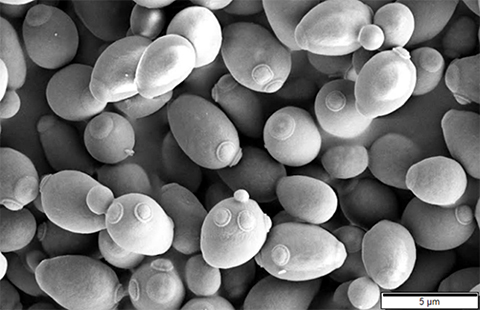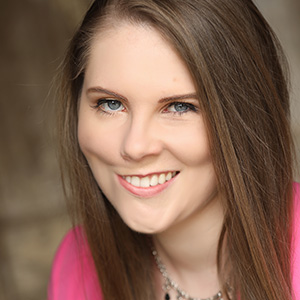
What makes lager yeast special? Inside the genetics of beer
While beers such as ales, stouts and sours have their own fanbases, America has long favored a crisp, refreshing lager. But what makes a yeast variety suitable for light, lager beer rather than ales?
According to Chris Todd Hittinger, a professor of genetics evolution at the University of Wisconsin–Madison, Saccharomyces cerevisiae, or baker’s yeast, requires a warm environment for optimal fermentation. This works well for brewing heavier beers, such as ales. However, to produce a lager, brewers need yeast that ferments best at cool temperatures.

Industrial lager brewers favor S. pastorianus, a hybrid of S. cerevisiae and a wild ancestor. Scientists did not understand how S. cerevisiae evolved to give rise to a cold-dwelling species until they discovered the wild ancestor of lager yeast, S. eubayanus, in 2011.
To understand this evolution, Hittinger’s lab compared the genomes of S. cerevisiae and S. eubayanus and found that S. eubayanus acquired cold tolerance in part through its mitochondrial genome.
“When we do experiments where we take a strain of industrial lager yeast, all of which have the S. eubayanus mitochondrial genome, and swap in the S. cerevisiae mitochondrial genome, the temperature preference of the yeast shifts upwards,” Hittinger said. “We think this is one of the big smoking guns, and it explains why all industrial lager strains have an S. eubayanus mitochondrial genome.”

Sugar, sugar, sugar
Beer starts with three main components: hops, yeast and wort — a sugary grain water that contains maltose and maltotriose.
“Unless you like cloyingly sweet beers ... you need to ferment all of the fermentable sugars into carbon dioxide and ethanol to create a nice, crisp, dry lager you’d enjoy on a hot summer day,” Hittinger said.
Domesticated lager yeasts can ferment maltotriose, but S. eubayanus cannot. Hittinger, John Crandall, a Ph.D. student in the Hittinger lab, and collaborators performed adaptive evolution experiments to find out how S. eubayanus could have acquired this trait. They found two distinct mechanisms.

“Both of our studies show that it takes pretty dramatic mutations to evolve this key trait,” Crandall said.
When selecting for maltotriose use, they found S. eubayanus acquired a novel, chimeric maltotriose transporter via genetic recombination of two MALT genes, which alone drive maltose metabolism.
Conversely, when they performed experiments selecting for maltose use, they found that the mutant S. eubayanus changed from diploid to haploid. This change activated an alternative metabolism in the yeast cells, allowing a haploid-specific gene to activate a previously dormant sugar transporter.
“Most of the advantage that haploids have comes from the fact that they express a small set of haploid-specific genes, which defines their cell type,” Crandall said. “None of these (haploid) genes were known to have any regulatory crosstalk with metabolic pathways in Saccharomyces cerevisiae, where that cell type–specification circuit has been extensively studied.”
Enjoy reading ASBMB Today?
Become a member to receive the print edition four times a year and the digital edition monthly.
Learn moreGet the latest from ASBMB Today
Enter your email address, and we’ll send you a weekly email with recent articles, interviews and more.
Latest in Science
Science highlights or most popular articles

Bacteriophage protein could make queso fresco safer
Researchers characterized the structure and function of PlyP100, a bacteriophage protein that shows promise as a food-safe antimicrobial for preventing Listeria monocytogenes growth in fresh cheeses.

Building the blueprint to block HIV
Wesley Sundquist will present his work on the HIV capsid and revolutionary drug, Lenacapavir, at the ASBMB Annual Meeting, March 7–10, in Maryland.

Gut microbes hijack cancer pathway in high-fat diets
Researchers at the Feinstein Institutes for Medical Research found that a high-fat diet increases ammonia-producing bacteria in the gut microbiome of mice, which in turn disrupts TGF-β signaling and promotes colorectal cancer.

Mapping fentanyl’s cellular footprint
Using a new imaging method, researchers at State University of New York at Buffalo traced fentanyl’s effects inside brain immune cells, revealing how the drug alters lipid droplets, pointing to new paths for addiction diagnostics.

Designing life’s building blocks with AI
Tanja Kortemme, a professor at the University of California, San Francisco, will discuss her research using computational biology to engineer proteins at the 2026 ASBMB Annual Meeting.

Cholesterol as a novel biomarker for Fragile X syndrome
Researchers in Quebec identified lower levels of a brain cholesterol metabolite, 24-hydroxycholesterol, in patients with fragile X syndrome, a finding that could provide a simple blood-based biomarker for understanding and managing the condition.

